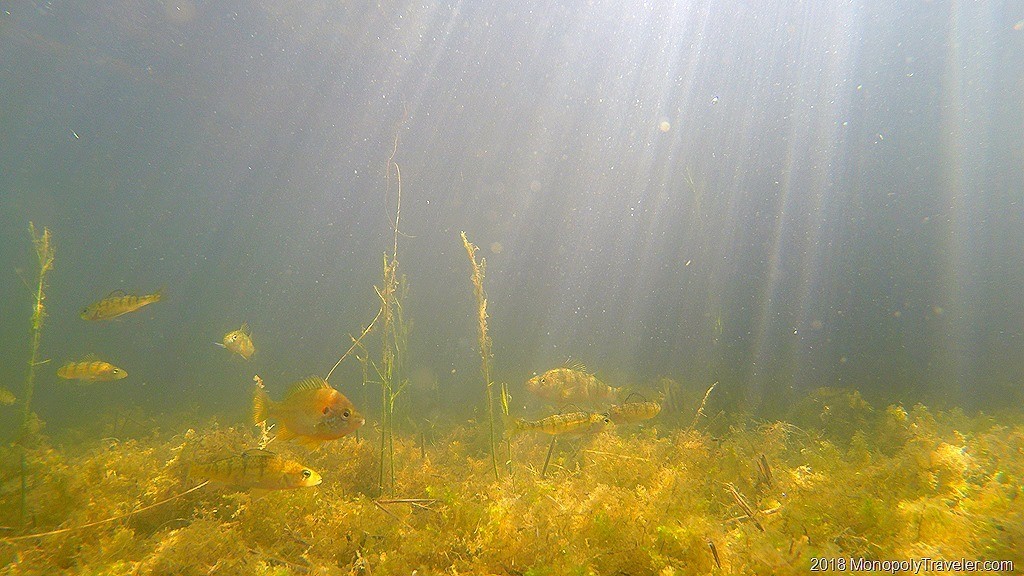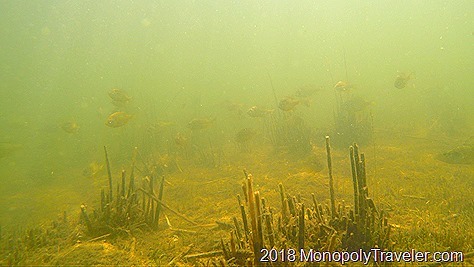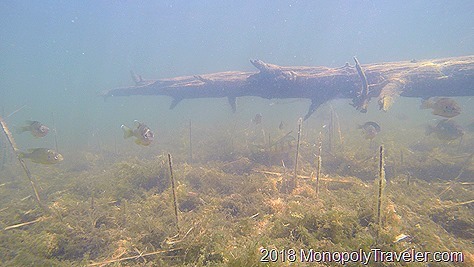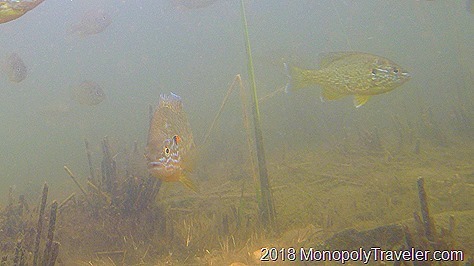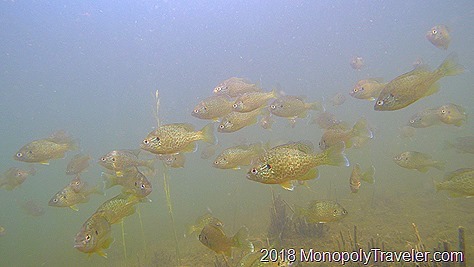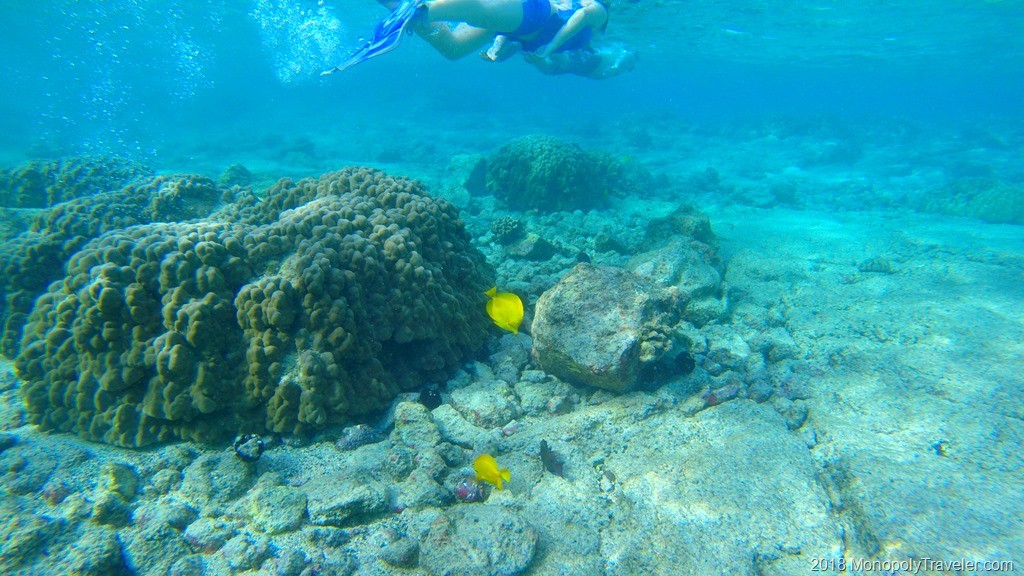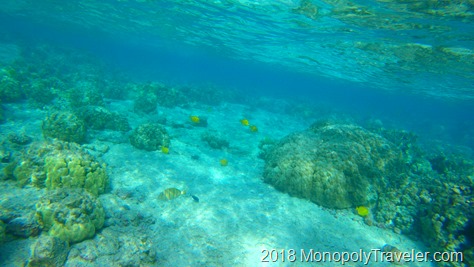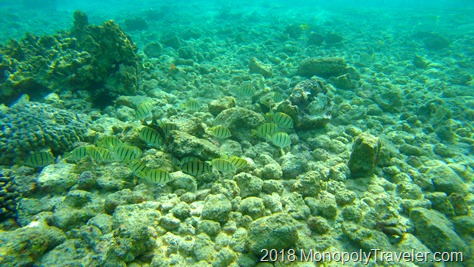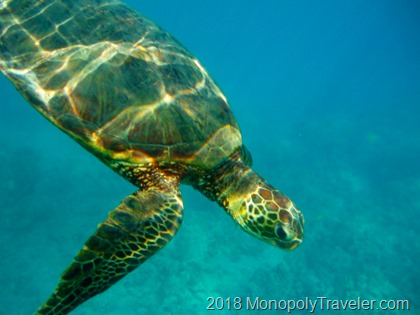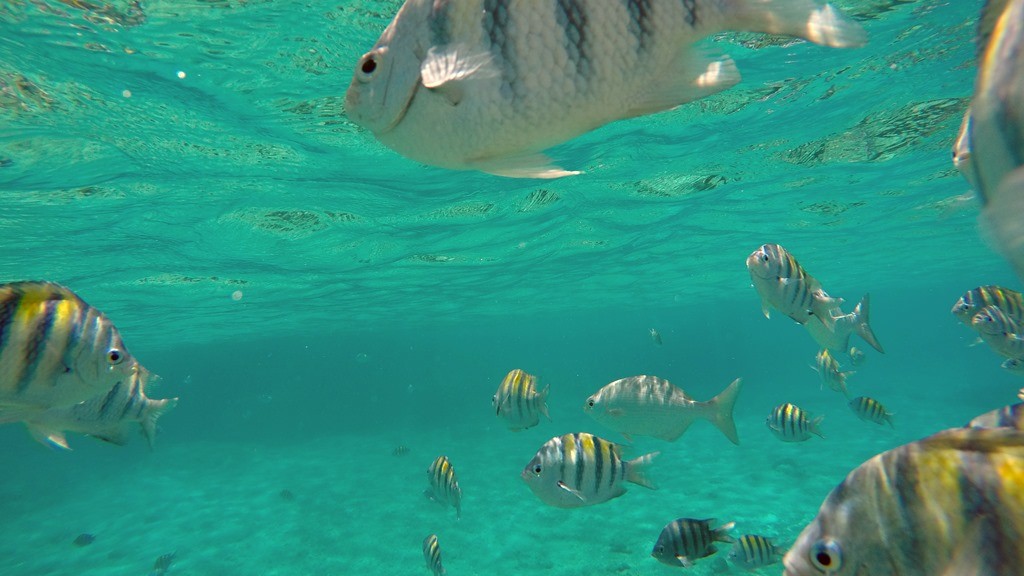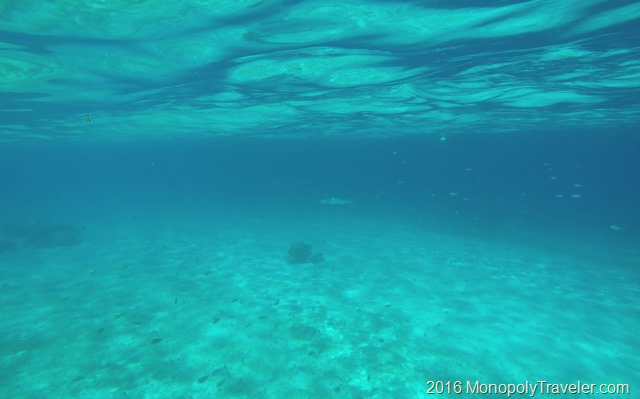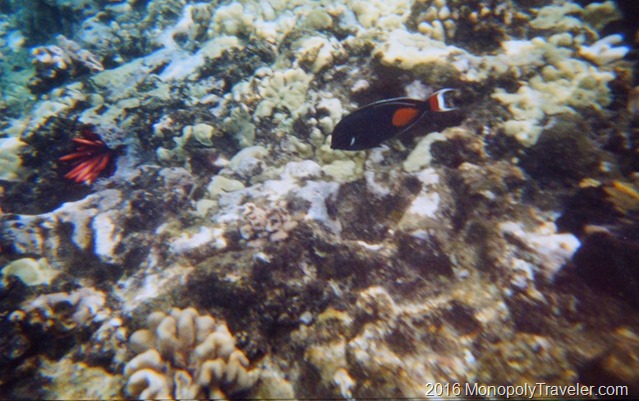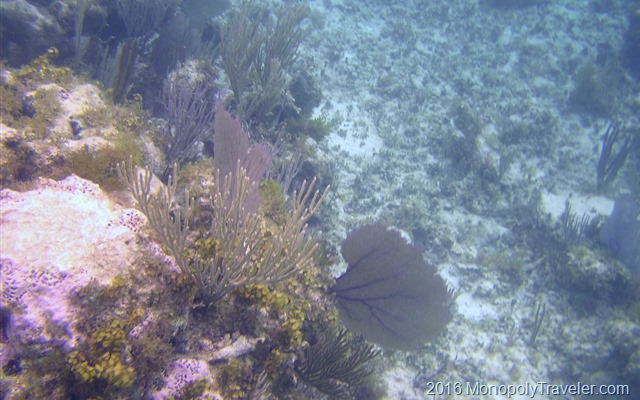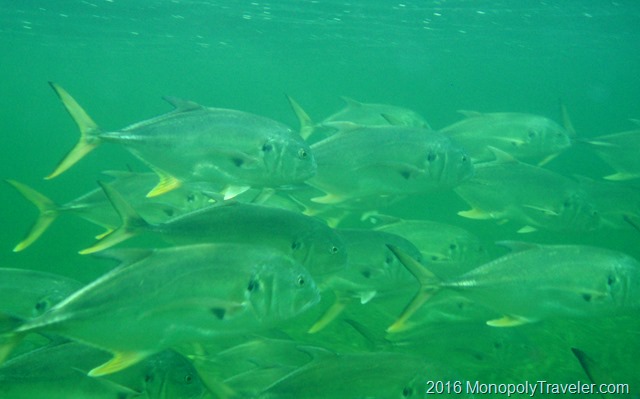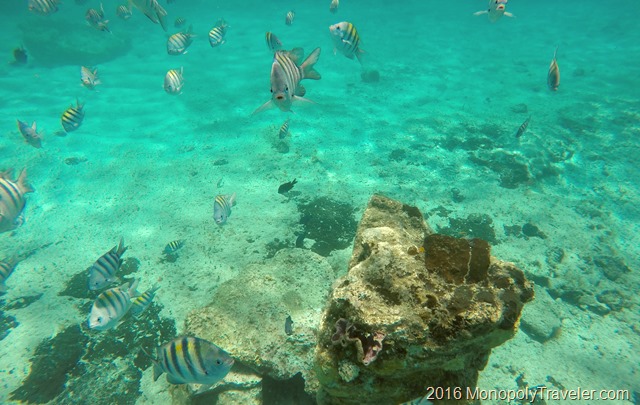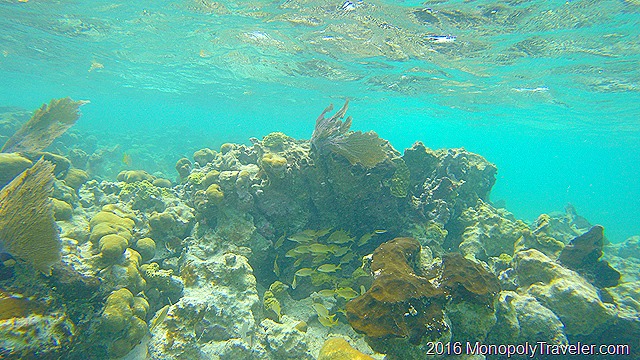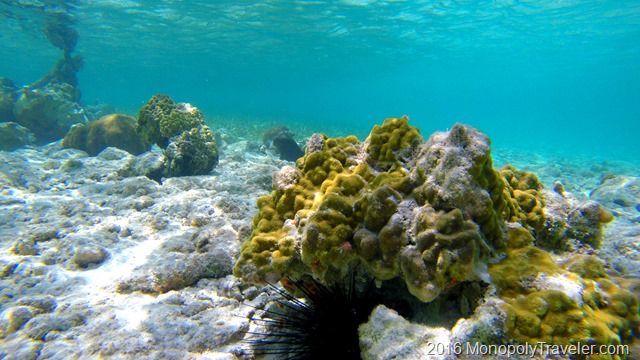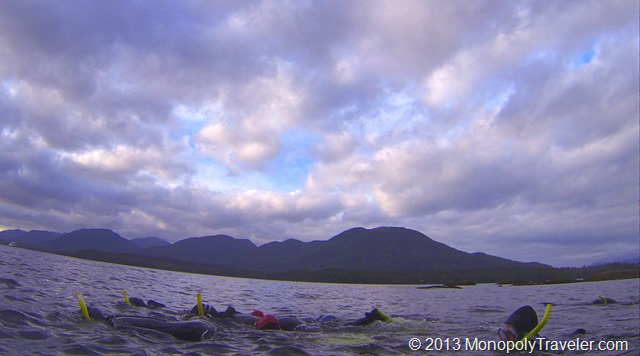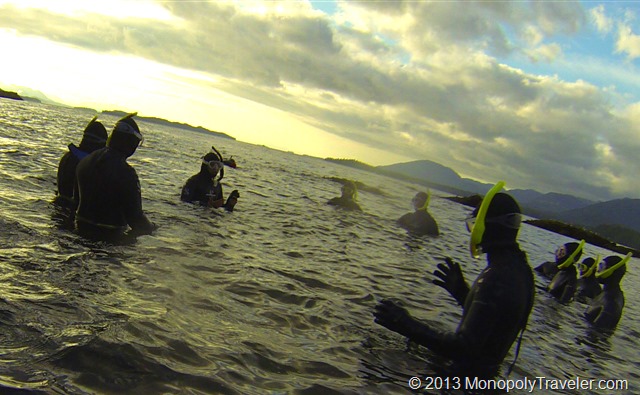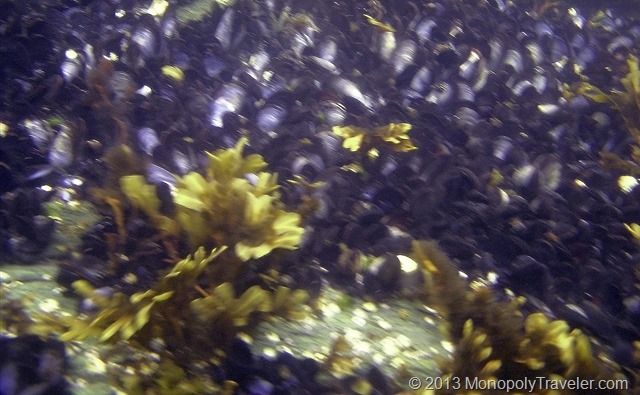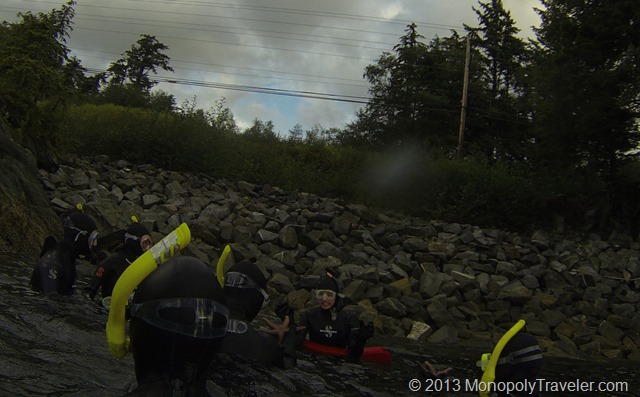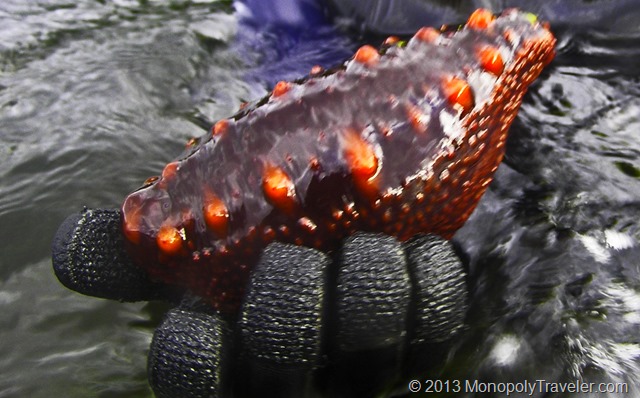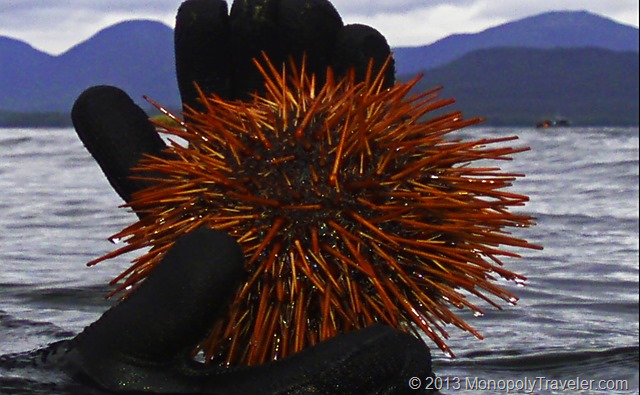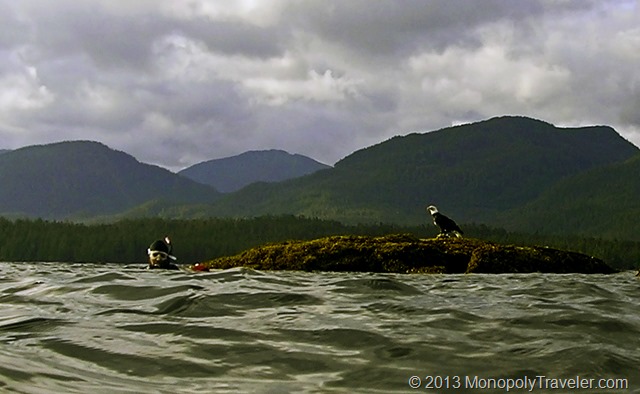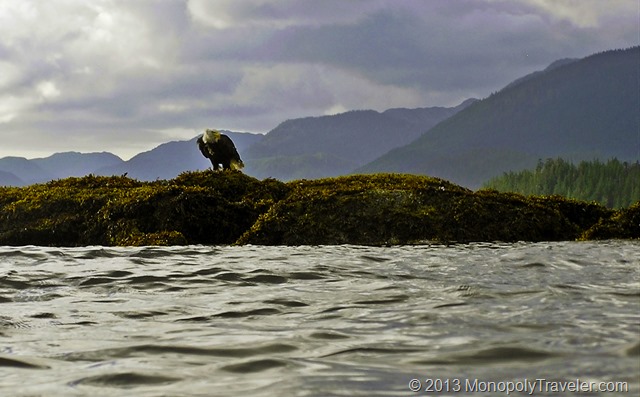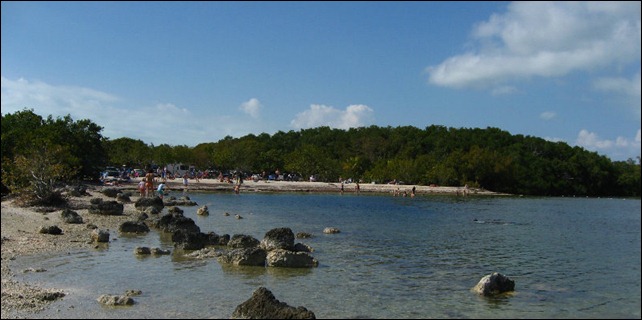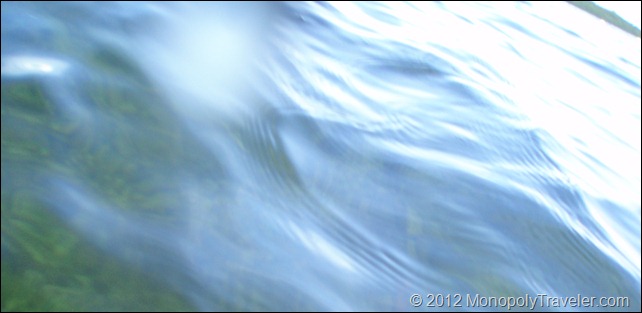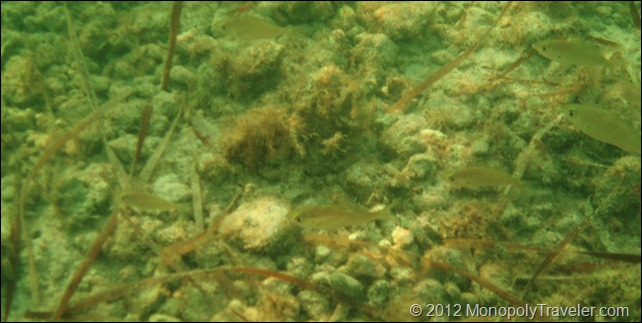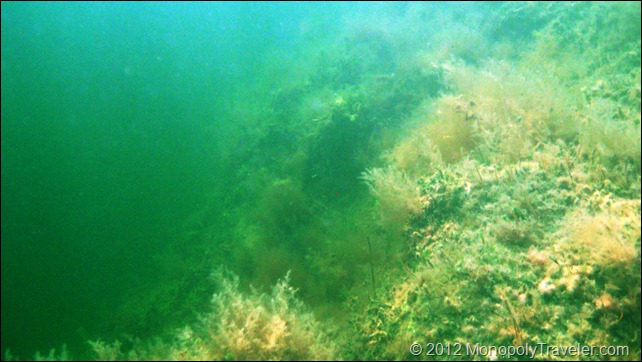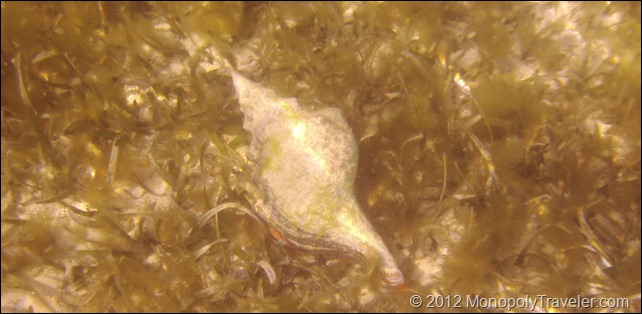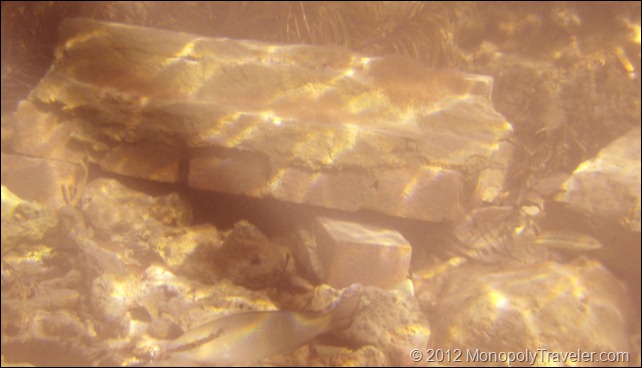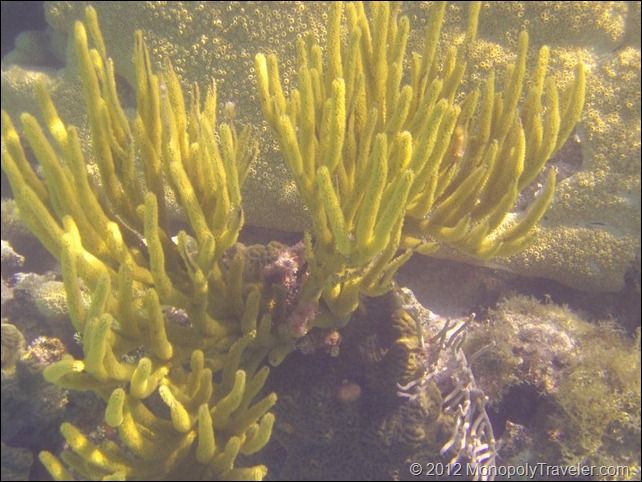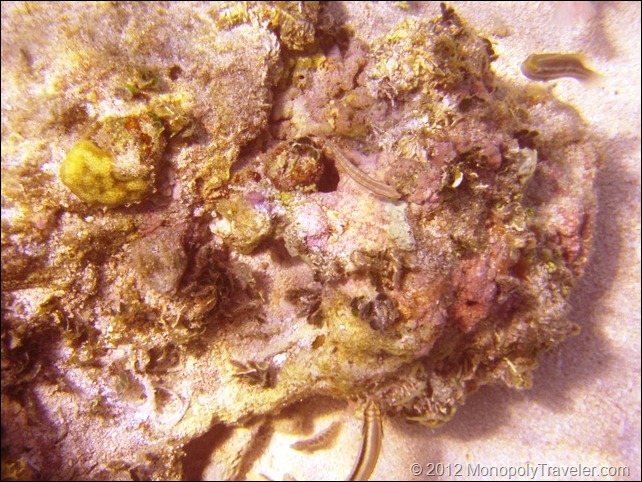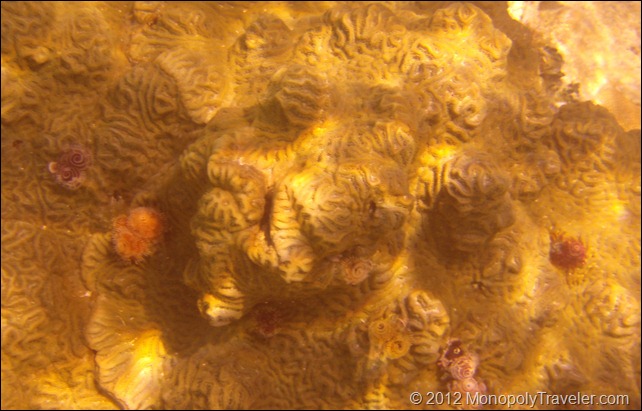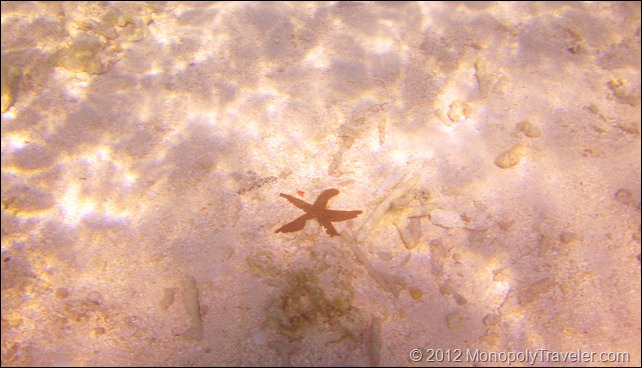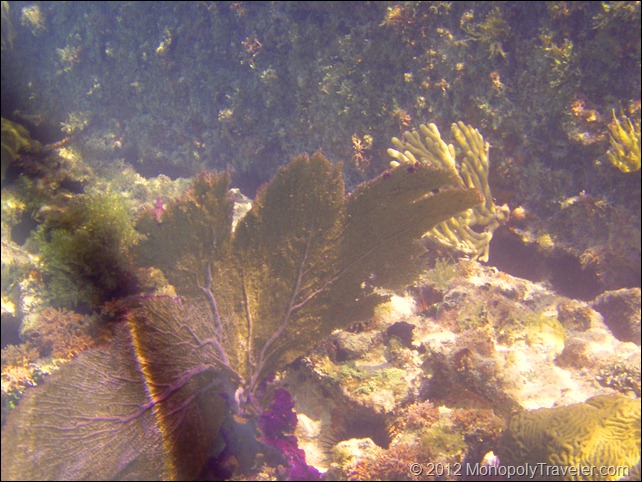On a recent trip to Lost Lake in the Chequamegon-Nicolet National Forest I read that the water clarity was pretty good so I brought my mask, snorkel. and of course the GoPro to explore the lake under the surface. I’ve never snorkeled in fresh water before so this would be a new experience. In salt water it’s pretty easy to stay afloat due to the high density of that water but fresh water I tend to sink rather easily so was nervous to try snorkeling in deeper water. Lost Lake seemed like a good spot to try as there is a lot of shallower places to swim allowing me to touch the bottom if needed.
My first adventure into the water brought several interesting observations for me. First, the water was a little cool but didn’t take any more than a few seconds to get use to which was nice. Next, the water clarity wasn’t quite as good as I was hoping for and finally, snorkeling in fresh water wasn’t much different than in salt water as far as being able to maintain my ability to float. I wished I had brought my fins once this was discovered because it was challenging to swim while holding a camera. Fins would make it easier to move forward while using the GoPro to record these beautiful fish.
I found it easier to move around by using my feet on the ground but that brought up a lot of the decaying organic debris into the water making the clarity even less. Some of the surrounding fish seemed to be happy with me doing that as I’m sure I was stirring up food with the debris. Once being able to move around a little easier I was able to focus more on the different fish, their behaviors, and the underwater landscape which was really interesting. There are pumpkinseed pan fish, perch, small mouth bass, and trout listed to be in Lost Lake. I didn’t see any trout but found the others lurking in weeds.
The landscape underneath the surface proved to be quite interesting with a combination of living and dead vegetation. Scanning through the weeds at different points there would be fish or two swimming in between them but if I stayed there for a minute or so there would soon be a large school surrounding me. I began to think there would be nightmares later that night of fish attaching from every direction. Fortunately that did not happen! At one point I just stayed in a single spot and turned completely around only to find fish in every direction staring at me. It was kind of cool and a little creepy at the same time.
Every so often I would come across a bare spot in the floor of the lake. As I watched some of these areas a larger pumpkinseed would return and begin to flare its gills and fins at me in defense of this spot it had previously cleaned off as a nest. I would move towards it and scare this fish away only to have it return a short time later. This wasn’t something I would do repeatedly as I didn’t want it to abandon the nest but found this behavior interesting as I was many times larger than the fish. After swimming among the fishes for awhile I returned to the shore to dry off eagerly wanted to go fishing. It almost seemed like cheating a little because I had found certain areas for certain fish so knew where to cast. That didn’t mean I necessarily caught them even though I had a good idea where they were. Another freshwater snorkeling adventure is definitely on my agenda when I get a chance.

